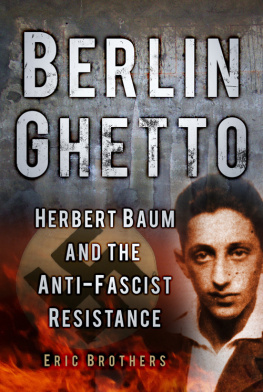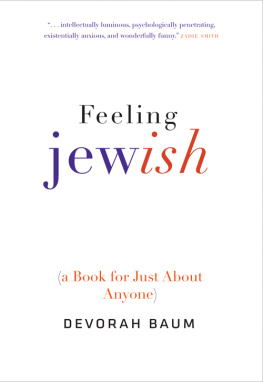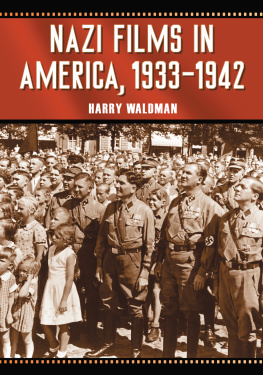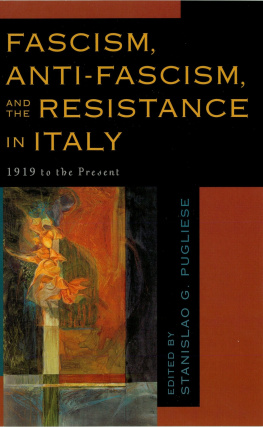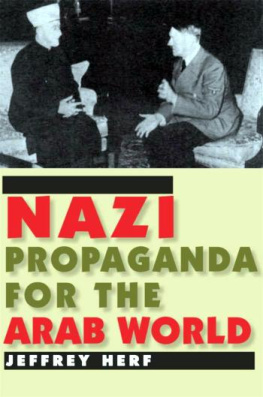

This book is dedicated to my mentor, Dr Arnold Paucker OBE. He was always willing to help, provided me with guidance, published my first research on the Baum group and championed my work in his own writing. Without his help, this book would not exist. Dr Paucker, you have my eternal gratitude.
When I began research on the Baum group, I attempted to locate as many people as possible who knew group members. I was surprised to locate two hitherto unknown members in the United States in the early 1980s: Ellen Compart who survived the war underground in Berlin and Alfred Eisenstdter, who emigrated to New York in 1941.
The others whom I contacted and either interviewed and/or had write depositions were either comrades, friends, relatives or associated in one way or another with Baum group members. Most, but not all, of these people took part in active anti-fascist resistance of some kind. They were Norbert Wollheim, Ellen Arndt (ne Lewinsky), George Manasse, Ilse Kessler (ne Prager), Margot Deutsch-Verlado (interviewed in London by Kerstin Wachholz), Gnther Prager, Gerhard Zadek, Otto Wendt, Walter Sack, Kurt Siering, Manfred Lindenberger (interviewed by Herbert Lindenberger), Gerda Lth (formerly May, ne Fichtmann), Rudi Barta, Max Abraham, Herbert Ballhorn, Henry (Heinz) Sachs, Herbert Ansbach, Inge Berner (ne Gerson), Fred Cassel, Ilse Heller (ne Held), Inge Aptekmann (ne Gongula) and Werner Rosenstock. I thank them all warmly for their assistance. I was fortunate to have been able to meet these people or contact them via telephone or in writing during the 1980s, spread as they were across the world in the US, Britain, Israel and East Berlin. I would imagine that most of them are no longer with us. I wish to add a special thank you to the late Gnther Prager. He became a close friend and is sorely missed.
I wish to thank those writers and others who have assisted me on this project. Michael Kreutzer included me amongst the contributors of the exhibition Juden im Widerstand (Jews in the Resistance) in Berlin in 1993. He also provided me with original photographs of the Soviet Paradise exhibition from 1942, as well as the photograph of Herbert Baum used on the cover of this book. Dr Arnold Paucker OBE, the former editor of the Leo Baeck Institute Year Book in London, is a trusted mentor and advisor. The East German author and archivist Dr Margot Pikarski wrote the first complete book on the Baum group, Jugend im Widerstand: Herbert Baum und Kampfgefhrten ( Youth in Resistance: Herbert Baum and Comrades ). She was the first writer to interview the survivors of the Baum group in East Berlin, where most of the survivors settled after the war. She gave me several photographs reproduced in this book.
Hermann Pichler, the Associate Editor of Aufbau in New York in the early 1980s, was very helpful in my search for survivors of the Baum group and their friends and relatives. Also during the 1980s, Diane Spielmann, librarian at the Leo Baeck Institute in New York, as well as the entire staff, did everything they could to help me. The late Yuri Suhl, author of They Fought Back: The Story of the Jewish Resistance in Nazi Europe , was an early mentor. My history professor at SUNY Empire State College in New York City, Tom Grunfeld, was very helpful in the very earliest stages of my planning and research. Nobel Laureate Elie Wiesel read the first version of The Berlin Ghetto (when it had the title Red Flags and Yellow Stars in the early 1990s) and was kind enough to meet with me to discuss it; at the time he offered to write the introduction to the book upon publication. Michael Berenbaum, the former director of the US Holocaust Memorial Museum, read the same version and also offered to write its introduction.
The late Erich Honecker, the former head of state of the German Democratic Republic, personally arranged a visa for myself and my wife through the GDR Anti-fascist Committee (Antifa) to visit East Berlin and meet the Baum group survivors in the summer of 1988. The late Rudolf Helmer, the international affairs secretary of Antifa, sponsored my seven-day stay. Without the assistance of Honecker and Helmer, I would not have been able to meet and interview several veterans of the Herbert Baum group. It was during that trip that I first met Dr Margot Pikarski.
I wish to thank Ruth Kysel, my English teacher from Fort Lee High School in New Jersey, who has been a trusted friend and confidant since 1971. I also wish to thank my friend Pastor Steven Vornov, also from Fort Lee, for his enthusiasm and kind words during the final phase of this very long project.
I wish to thank my editor at The History Press, Miranda Jewess, for her help in making Berlin Ghetto ready for publication. Also Shaun Barrington at The History Press, who patiently helped a cranky first-time author make a final deadline on a project that was 28 years in the making. Lastly, I wish to thank my wife Joan for her support over the years since I first began this project in 1983, as well as my children David, Allison and Shayne.
CONTENTS
I first began work on Berlin Ghetto as a reaction to seeing the French documentary film on the Holocaust, Night and Fog ( Nuit et Brouillard ), which was released in 1955. A poignant and disturbing film, its images and score haunted me for years. The absence of the theme of Jewish resistance in Night and Fog demanded a response. Berlin Ghetto is that response.
The first version of Berlin Ghetto was completed in 1989 when it had the title Red Flags and Yellow Stars . The second draft was written in 1998, having sat in a filing cabinet for about eight years. The final version was written in 2011. Even though it has always been the same book, to me it feels like three different books on the same topic. The first book (19831989), which was typed upon a Commodore 64 computer, had a raw quality to it, employing almost exclusively my interviews and written depositions from surviving Baum group members to tell the story of anti-fascism in Berlin from 1925 to 1942. In the second book (1998), I took my research and placed it within the context of German anti-fascist and communist culture, as well as the history of the German-Jewish youth movement. Some chapters of that version were unacceptable to my mentor, Dr Arnold Paucker. They were deleted when I began the third book (2011). One chapter that I had planned to include that disappeared, written in 1998, was The Wandervogel, the Jewish Question, and Volkish Thought. It is nowhere to be found. All that is left of it is an interesting title.
In the third book, I have taken scholarship and other material and included them in this chronicle of the Herbert Baum group. This final version of Berlin Ghetto places more importance upon the political life of the Baum group, while the first book almost exclusively emphasised the personal, social and cultural life of these young people. When preparing the final version, I took primary source documents that originally figured in endnotes, and, by using elements of new journalism made them part of the narrative.
What all the people I write about had in common was an absolute hatred of National Socialism and an almost cult-like admiration for Herbert Baum. Even though many of the people in the resistance around Baum were Jews, several were not. Therefore this is not a book about Jewish resistance in Germany. To categorise it as such would belittle the significant contribution and ultimate sacrifice of the non-Jews in the Baum group, as well as their comrades in other groups. Berlin Ghetto is about Jews and gentiles working together in the Berlin anti-fascist resistance in what essentially was a cultural ghetto. The Jews amongst them saw themselves as German anti-fascists and thus resisted as Germans; however, they were nonetheless persecuted as Jews by the Nazi regime.
Next page
